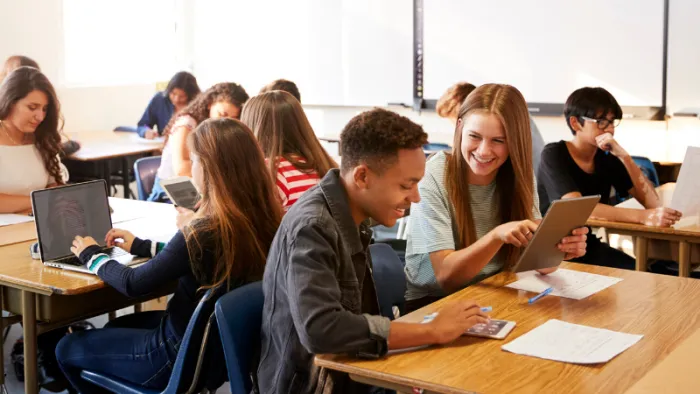When formative feedback felt like a dead end, this teacher dug in and learned how to empower his students.

A few years ago, formative assessment returned as a frequent topic of discussion in faculty meetings and professional development sessions at my school. I started mulling it over -- examining how I did it, how I used it, and how I saw students using it.
Like most teachers, I always knew there were things I could do better, but with formative assessment, I couldn't really figure out what that was. I made a list of all the things I already engaged in on a regular basis:
- Meetings with students about ongoing work
- Writing extensive comments on student work related to specific learning goals
- Knowledge/learning checks
- Peer work (editing, revising, commenting, and so on)
- Good old-fashioned quizzes
- Goal-setting activities at different points during the year
After some careful reflection, I realized I didn't need to give more feedback, nor did I need a new formative feedback tool. The problem I faced with formative assessment, I realized, was that the students who needed that feedback the most were the ones not using it. It wasn't a big group, but in each of my classes I could easily identify a few students who, no matter what I seemed to do, ignored all that formative work.
We needed to figure out why they weren't using the formative feedback to improve their learning.
Those Google Doc comments on the project we were doing? William turned in a final draft that didn't reflect any of the improvements I'd suggested. The one-on-one conference in which we talked about how to support an argument with evidence? Michelle didn't do anything we talked about. The learning-check activities we did about common characteristics in urban civilization? Aaron clearly saw that he couldn't explain them but seemingly did nothing to remedy the problem.
If I thought about it, it made me crazy, but at least now I knew where to focus. Other students were revising work, studying things they weren't sure about, and practicing skills. These three weren't, and the first thing I needed to do was find out why.
Making a Plan to Promote Student Ownership
In the next regular meeting I had with each student, I told each one that we needed to figure out why they weren't using the formative feedback to improve their learning. The answers they gave weren't all that surprising, when you think about it. William wasn't actually sure where to begin or how to incorporate the suggestions I made. Michelle felt like it really wouldn't make a difference because she just simply wasn't a good writer. Aaron was somewhere in the middle; he often felt like it was too late to "fix" the problems because there was often too much to do. This was a good start.
I asked each student to commit to making one substantive change based on comments or our meeting discussion before they turned in their final draft of the project we were working on. Since the writing portion was in Google Docs, they decided that they would explain how they were following through on feedback in a comment to me.
We talked about how they could use their peer-conferencing and -editing sessions better by incorporating what they wanted to improve into their meeting with a partner. Though it seemed obvious to me, each student was kind of at a loss about how to do that. We settled on asking specific questions ("How can I __?," "Where can I __?," or "Is this a good place to __?"). Each student committed to writing down the questions they asked. I followed up on those conversations with a similar discussion and modeling before our next peer-editing session.
How Students Responded
Michelle, who previously had never followed through on the ideas we talked about in conferences, decided to focus on her use of evidence. She partnered with another student and asked specifically where she should include her examples and facts. She had the examples and facts, but she just didn't know where they really fit. I actually heard her say, "But how do I make it fit?" With me, she started asking if the evidence was convincing.
I had already tried to give William focused feedback, but in his first peer conference he asked whether he should work on transitions between ideas or on his introduction. (Remember, this was the guy whose idea of revision had always been clicking "resolve" on a Google Doc comment.) In his final comment response to me, he explained that once he saw the difference in the introduction, it "felt like it was a check-box done" and he could move on to other steps.
Aaron ended up doing something of a combination of William's and Michelle's strategies. He worked with me and another student to prioritize what he should work on and how to do it, but he also asked me, through a written comment, if it would be OK to "just focus on sentence structure this time?" He wanted to get that skill down before he worked on anything else. For the first time, I was seeing him address his "gaps," so how could I not agree?
I made changes in what I did that pushed for more accountability from students but which also made me engage in more of a dialogue in my formative feedback.
What We Learned
In the end, the strategies the three of us agreed to seemed like something every student would benefit from. I made changes in what I did that pushed for more accountability from students but which also made me engage in more of a dialogue in my formative feedback. William, Aaron, and Michelle did not magically transform, but they (and my other students) definitely started to "feel formative" (as we now call it). That idea, that we are still taking shape and not yet fully formed, is what prompts real change.







